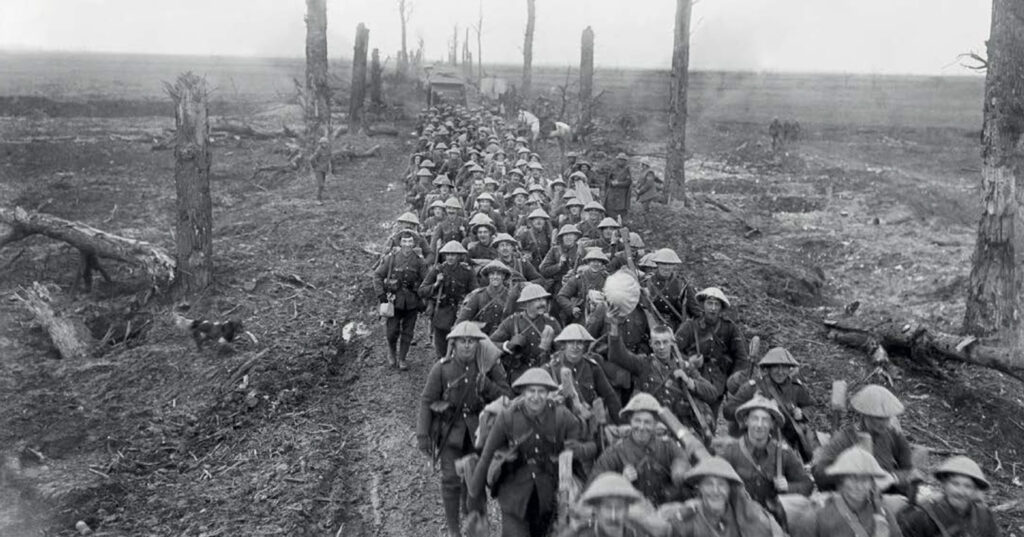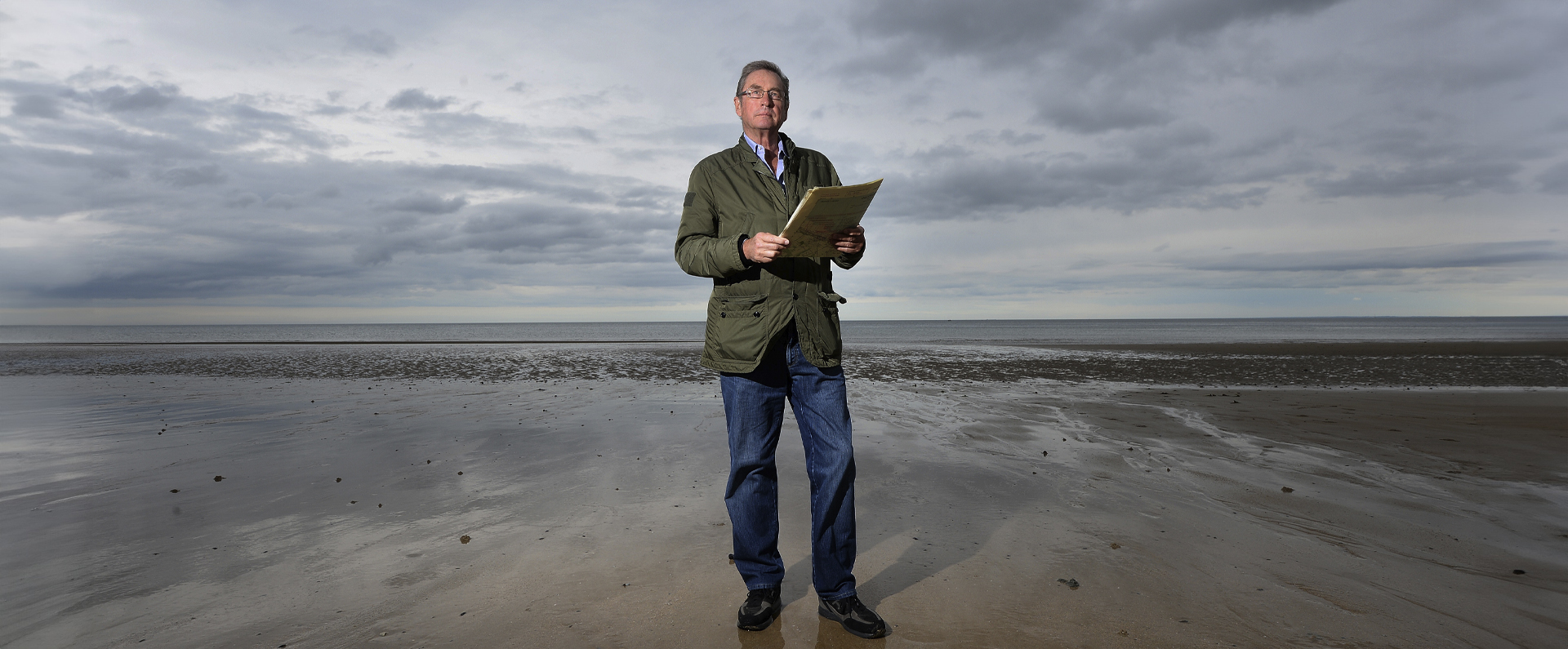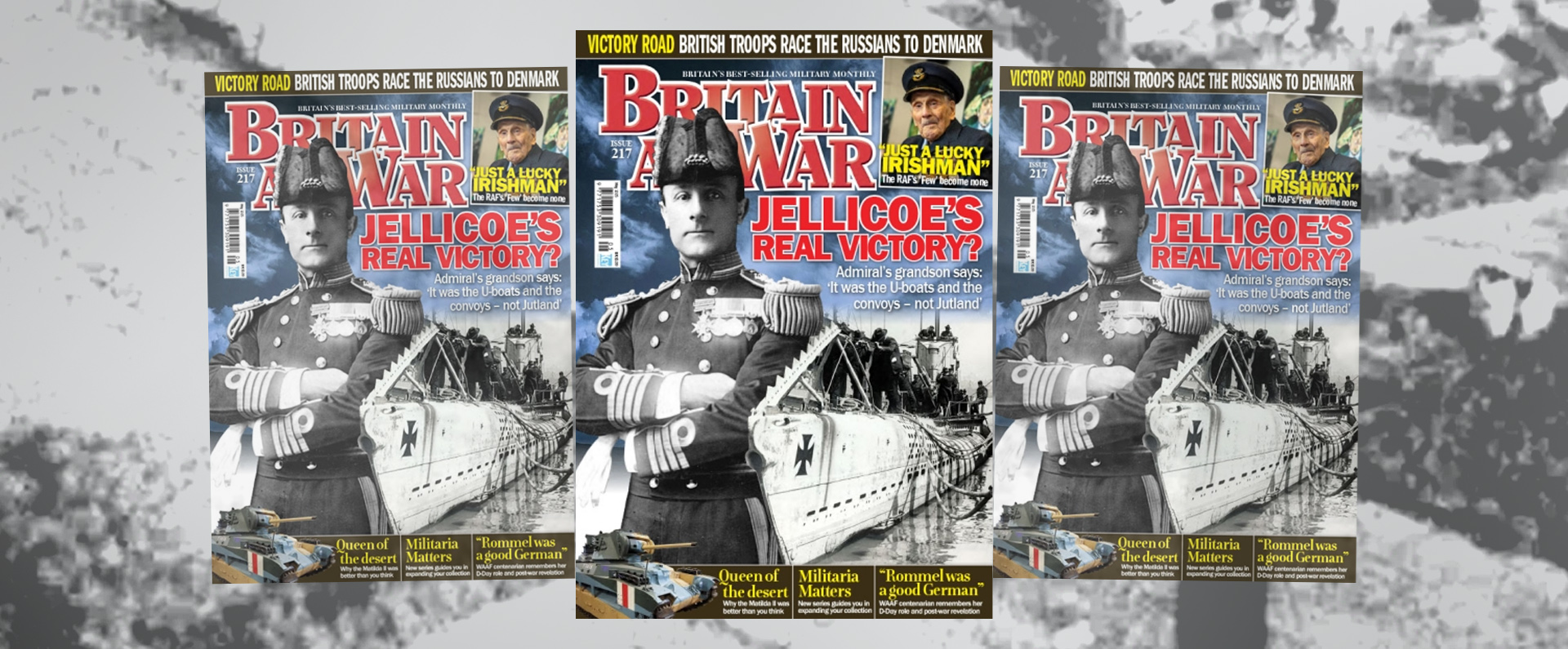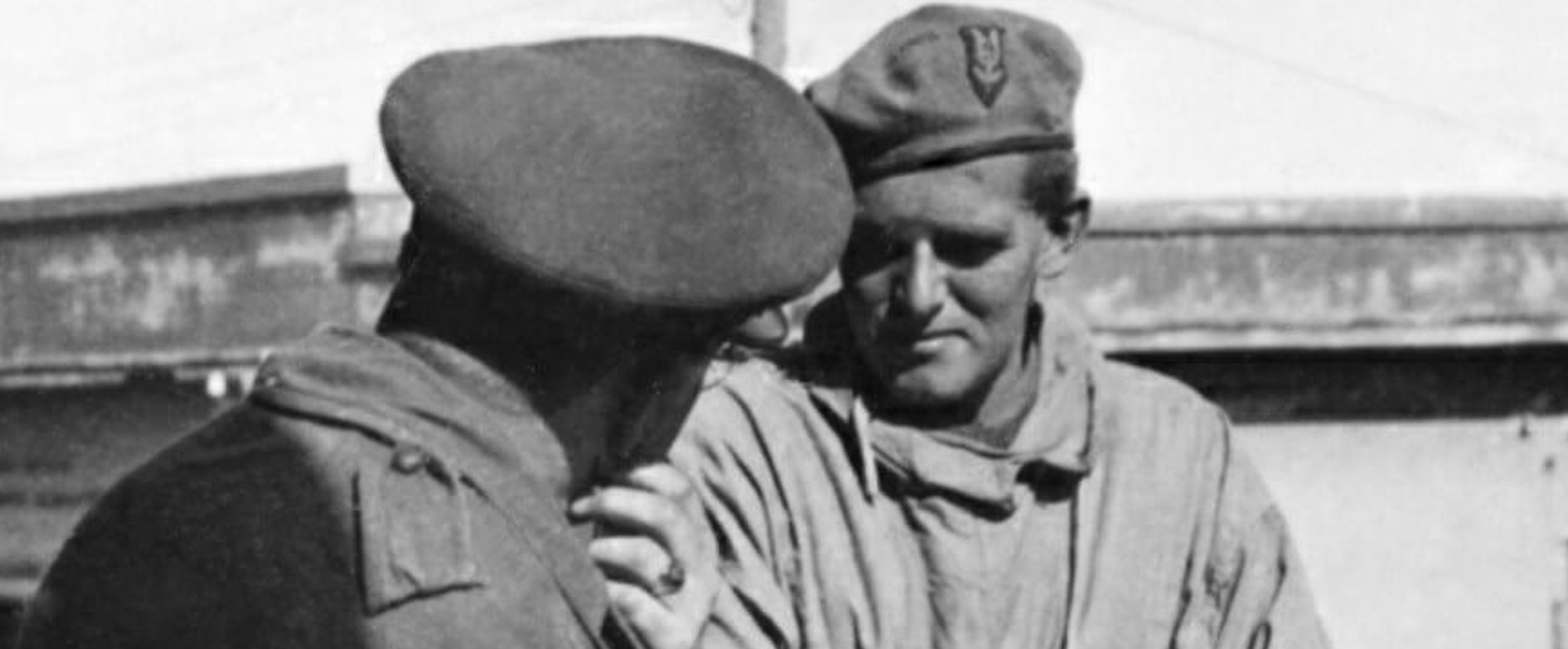
Published in Britain at War in January 2021.
Lieutenant Colonel The Rev Bernard William Vann VC, MC & Bar
Lieutenant Colonel The Rev Bernard Vann has a unique place in history as the only Church of England cleric to be awarded the Victoria Cross (VC) as a combatant. Furthermore he was one of only three Anglican clergymen to command an infantry battalion on the Western Front during the Great War.
Bernard William Vann was born in Rushden, Northamptonshire, on July 9 1887. He was the son of a headmaster, Alfred (better known by his second name of George) Vann, and his wife Hannah (née Simpson), who was also a teacher. The fourth of five boys, Bernard attended his father’s school, South End Elementary School in Rushden, where his mother also taught. Afterwards, he attended Chichele College, Higham Ferrers, Northamptonshire, where his father was by then headmaster.
Vann Jnr was both academic and sporty, captaining the soccer, hockey and cricket teams. After leaving school he worked for a time as a teacher at Ashby-de-la-Zouch Grammar School and developed his soccer talents, playing centre forward for Northampton Town (he later played for Burton United and Derby County). Relentlessly ambitious, he attended Jesus College, Cambridge, from 1907, where he was a hockey blue and a talented soccer player. He also earned a reputation for delivering passionate speeches, although they could be somewhat chaotic in nature too.
After graduating in 1910, Vann was ordained as a deacon on September 22 1911 at St Barnabas, New Humberstone, near Leicester, by the Bishop of Peterborough. After this short-lived post, he was the curate at St Saviour’s, Leicester, for two years. Vann was chaplain and an assistant master of Wellingborough School, Northamptonshire, from January 1913 to August 1914. Following the outbreak of the First World War in August 1914, he applied for an Army chaplaincy but, impatient at the delay in being accepted, enlisted instead as a private into the 1/28th Battalion, London Regiment (The Artists’ Rifles)’ in late August. Days later, on September 1 1914, Vann was commissioned into the Sherwood Foresters as a second lieutenant.
The Rev Arnold Manvell, the vicar of St Barnabas in New Humberstone, told a local journalist:
“As soon as I heard that Vann had enlisted, I thought he would either get killed or win the V.C., because there is nothing that would keep him back. He does not know what fear is.”
It was to be prove to be an accurate prophecy.
Vann arrived in France in February 1915 and, at Kemmel on April 24 , the small advance trench that he was in was blown up, causing him to be badly bruised and buried for a short time. However, he not only dug himself out, but he then organised the defence and, under heavy fire, rescued others who were buried. Two days later, he was promoted to lieutenant.
He was made a temporary captain on June 6 and, on September 15, he was awarded the Military Cross (MC) for his bravery over the previous months. His citation read:
“At Kemmel on 24 April 1915, when a small advance trench which he occupied was blown in and he himself wounded and half buried, he showed the greatest determination in organising the defence and rescuing buried men under heavy fire, although wounded and severely bruised he refused to leave his post until directly ordered to do so. At Ypres on 31 July 1915, and subsequent days, he ably assisted another officer to hold the left trench of the line, setting a fine example to those around him. On various occasions he has led patrols up to the enemy’s trenches and obtained valuable information.”
In September 1915, Vann took part in the Battle of Loos that, by then, had already claimed the life of one of his brothers, Captain Arthur Vann. In fact, Bernard Vann was then badly wounded by a bullet that passed through his left arm during fighting in October that resulted from a British attack on the Hohenzollern Redoubt. However, he continued throwing grenades until ordered from the battlefield.
In June 1916, Vann was promoted to substantive captain and, later the same month, to acting major. In September, he took part in a daring raid on enemy trenches. When he came across a dug-out full of enemy soldiers at Blairville, he ordered them out. As two soldiers came at him with fixed bayonets, he killed one, wounded another and the rest of the party surrendered. For this gallantry, he was awarded a Bar to his MC that was announced on November 14 1916 when his citation read:
“For conspicuous gallantry in action. He led a daring raid against the enemy’s trenches, himself taking five prisoners and displaying a great courage and determination. He has on many occasions done fine work.”
For several months in 1917, Vann was back in the UK recuperating from neuritis (the inflamation of a nerve or the whole nervous system). In the same year, he was awarded the French Croix de Guerre. Far from renouncing his priesthood as a soldier, Vann was involved in religious work on the frontline and, even when commanding his battalion, he sometimes gave Holy Communion to sick or wounded soldiers.
In late September 1918, by then with the rank of acting lieutenant colonel and having been wounded in battle at least 11 times, Vann took part in the attack for which he was awarded the VC. At the time, he was commanding the 1/6th Sherwood Foresters.
The citation for his VC stated:
“For most conspicuous bravery, devotion to duty and fine leadership during the attack at Bellenglise and Lehaucourt on September 29th, 1918.
He led his battalion with great skill across the Canal du Nord through a very thick fog and under heavy fire from field and machine guns.
On reaching the high ground above Bellenglise the whole attack was held up by fire of all descriptions from the front and right flank.
Realising that everything depended on the advance going forward with the barrage, Col. Vann rushed up to the firing line and with the greatest gallantry led the line forward. By his prompt action and absolute contempt for danger the whole situation was changed, the men were encouraged and the line swept forward.
Later, he rushed a field-gun single-handed and knocked out three of the detachment. The success of the day was in no small degree due to the splendid gallantry and fine leadership displayed by this officer.”
The British assault had been successful but at a price. During the capture of Ramicourt-Montbrehain on September 29, 1,500 enemy prisoners were captured but four officers and twenty-five other ranks were killed, with 108 men wounded and eight missing.
Vann’s VC was announced in The London Gazette on December 14 1918, just over a month after the war ended. However, by then it was a posthumous award because Vann had been killed, aged 31, by a sniper near Ramicourt on October 3 1918, when leading his battalion into the attack.
After Vann’s death, a fellow officer wrote in The Times: “I can think of him only as a fighter, not merely against the enemy in the field, but a fighter against everything and everybody that was not an influence for good to his men…His many friends will rejoice with his young Canadian widow that the constant gallantry and magnificent example of this fine Christian gentleman have been recognised by the highest award the country can bestow.”
Vann’s mother wrote shortly after his death: “We are feeling the blow keenly, but are trying to brace one another up, and it is a consolation that death was instantaneous. His body was recovered & buried at Bellenglise (Beautiful Church) where 4 days previously he had performed a special deed of valour.”
Vann left a widow, Doris (née Strange-Beck), a Canadian nurse whom he had met in Paris and married at St Paul’s Church in Knightsbridge, London, on December 27 1917. Their son Bernard Geoffrey was born on 2 June 1919 but, of course, Vann never lived to see him. His widow received his VC from George V in an investiture at Buckingham Place on November 26 1919. As well as his VC, she received her late husband’s damaged chalice and his Bible in a small, leather case. Vann’s son went on to become lieutenant commander in the Royal Navy and he died in 1994.
Bernard Vann is buried at the Bellicourt British Cemetery in France where the inscription on his headstone, which was proposed by the Bishop of Peterborough, who had ordained Vann, reads: “A Great Priest Who In His Days Pleased God.” Furthermore, his name appears on several memorials including, along with the name of his brother who died at the Battle of Loos, on the Coates War Memorial in Gloucestershire. In 2006 a Blue Plaque was unveiled at Vann’s birthplace – 46 High Street, Rushden – by his grandson.
Those wanting to know more about this extraordinary man’s life should read a wonderful and thoroughly-researched biography on his life by Charles Beresford called “The Christian Soldier.” The author notes: “Bernard [Vann] was one of over five hundred Anglican clergymen who joined the British and Imperial Armies other than as chaplains in the Great War. Many served with great distinction and at least forty-six paid the ultimate sacrifice.” Beresford goes on to praise “these brave men, all volunteers, who decided to answer the call of their King and Country, sometimes against the express wishes of their bishops and the Archbishop of Canterbury.”
In 2014, to mark the centenary of the start of the Great War, a BBC radio documentary was aired which was presented by Rev Richard Coles, the vicar of St Mary’s in Finedon, Northamptonshire, who had given up his career as a pop star in The Communards to become a priest.
Rev Coles, who wanted to go in search of the “real” Bernard Vann, was full of admiration for the VC recipient. “I don’t think he could have asked for a more honourable death. That is a warrior’s death.” He said that Vann must have struggled to reconcile his Christian beliefs and his role as a frontline soldier. “There would have been tensions. But he was convinced of the righteousness of this war and the British cause.”
I purchased Vann’s gallantry and service medals privately in 2010 and I feel immensely privileged to be the custodian of this courageous man’s medal group.
Download a PDF of the original Britain at War article
For more information, visit:
LordAshcroftOnBravery.com


